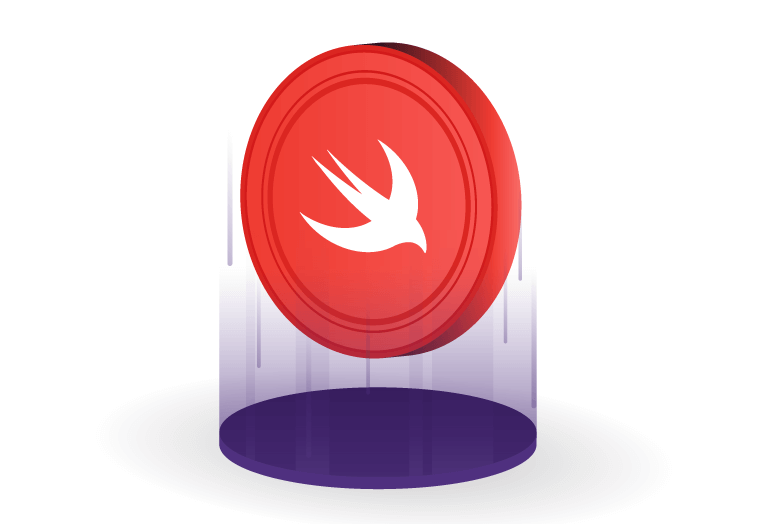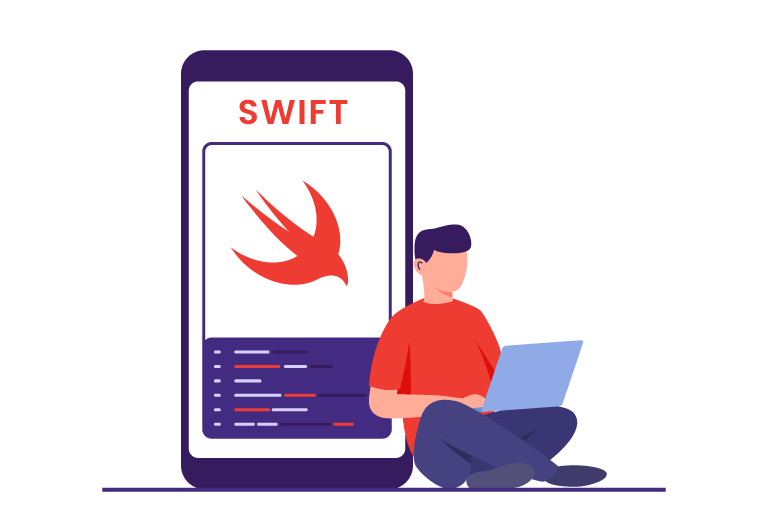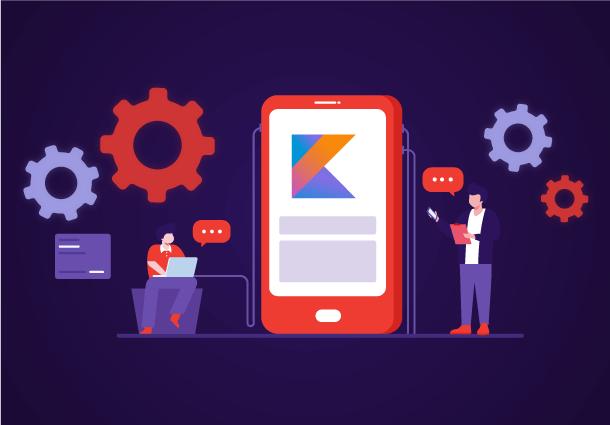Swift Programming Language Growing Swiftly
As of now, Swift doesn’t have many competitors in the iOS realm. As per the statistics of July 2019, over 22.1% of mobile devices have got iOS installed. This shows that there are still many people using Apple devices to handle
their personal and business needs. Every business has to make a smart decision while choosing the tech stack for its home product. Swift programming is beyond their expectations as it can offer them a versatile solution in iOS development.
What is Swift Programming Language?
Swift programming is nothing but a compiled programming language specially meant for watchOS, iOS, macOS, and tvOS, along with Linux applications. This is what you should be knowing about Swift 5.0 and SwiftUI.
Apple created it in 2014: Swift has been backed up by major technology companies in the world. It has got a predominant role in iOS app development.
Open-source platform: Many Swift creators have gone on to acknowledge that for building a well-defined programming language, open-source technology has to help everyone. After three years of establishing itself, Swift’s native app development has gone on to acquire an extremely large and supportive community. It also has a multitude of third-party tools for iOS app development.
Safe and secured: The syntax of Swift native app development would allow you to create consistent and clean code. Not only this, but SwiftUI also offers safeguards to rectify all the errors as well as improve readability.
Faster approach: We can see that the community built Swift’s development by bringing out greater performance in their mind. Its simple syntax can help you hasten up the development process. Swift development would be 2.6 times faster in comparison to Objective-C. It is also 8.4 times speedier than Python.
It has been in demand: Swift programming has been ranked 14th in the place of the most popular programming languages of 2018.
Evolution of Swift: Exploring the Origin of Swift
In 2013, the team had the ability to solve a strategy on how the particular language is going to fit in with Objective-C. Every iOS developer planned to shift to a new programming language.  This also has a major disruptive effect on every community. That’s when Swift has gone on to get the support of top programming developers. Its initial release got mixed reviews but it went on to improve itself. In 2015, Apple made Swift open source. Nearly 60,000 people started using it. When Swift 4.0 was released in 2017, the language was deployed actively in iOS development while building more desktop apps for OSX. It was even used as a server-side technology by IBM. In 2019, Swift went on to release 5.0. The recent Swift version consists of a stable Application Binary Interface (ABI) across different Apple platforms. This plays a huge role in helping every developer leverage Swift on dedicated OSs such as macOS, iOS, tvOS, iPadOS, and watchOS. Apple has started working on building a solid iOS ecosystem. All this states that iOS development is going to be the future in the upcoming days.
This also has a major disruptive effect on every community. That’s when Swift has gone on to get the support of top programming developers. Its initial release got mixed reviews but it went on to improve itself. In 2015, Apple made Swift open source. Nearly 60,000 people started using it. When Swift 4.0 was released in 2017, the language was deployed actively in iOS development while building more desktop apps for OSX. It was even used as a server-side technology by IBM. In 2019, Swift went on to release 5.0. The recent Swift version consists of a stable Application Binary Interface (ABI) across different Apple platforms. This plays a huge role in helping every developer leverage Swift on dedicated OSs such as macOS, iOS, tvOS, iPadOS, and watchOS. Apple has started working on building a solid iOS ecosystem. All this states that iOS development is going to be the future in the upcoming days.
Why is Swift the Best Choice for Native Development?
Many people refer to Swift as “Objective-C, without the C,” We can note that Swift language has found a primary role with respect to all its predecessors. You have to understand the comparison of Swift and Objective C. The official press release of Swift states that “Swift combines the performance and efficiency of compiled languages with the simplicity and interactivity of popular scripting languages.” Let’s understand the pros of Swift.
Faster development process
Swift, a renowned programming language prized for its simplicity and expressiveness, has a reduced grammar and syntax that makes it easier for developers to read and write code. Because it is so brief, developers may write code that accomplishes more with fewer lines, thus increasing productivity. Additionally, Swift’s automatic memory management functionality does away with the requirement for manual memory control, effectively saving developers a lot of time and work. Swift supports quick app development by streamlining the language, giving developers the ability to quickly turn their ideas into reality.
Easily scale your team and product
With Swift, you get to build a future-proof product. You can extend it with a number of new features. You can notice that the scalability of Swift projects is quite easier. Swift would allow you to add a number of developers to your development team. With the simple and concise codebase, onboarding gets simpler. The Swift syntax is of natural English and quite easy to read.
Improvisation to performance and safety
Swift focuses on speed and performance. The initial focus of the language was to outperform all its predecessors. There was a 40% performance increase. Optimizing the Swift Code is also simple. With the right feedback loop, you can debug all the errors.
The decrease in the memory footprint
While building an app, you can leverage plenty of third-party code. This would also be reusable with open-source libraries or frameworks compiled into a specific app’s code. All these libraries are known to be static as well as dynamic. We can notice that static libraries would become an executable file part. Dynamic libraries would exist outside the code you can upload them only when you require it.
Objective-C interoperability
Swift language and Objective-C are compatible with each other. The comparison of Swift and Objective C plays a major role. You can interchange it within a particular project. This would work well with large projects which are now updated or extended. You can still go on and add more Swift features. This would allow you to take complete advantage of the Objective-C codebase. This way, you would have no problems with porting.
Simplified memory management
Swift leverages Automatic Memory Counting (ARC), which is a technology with a focus on adding a garbage collector function. Many languages like C#, Java, and Go make use of garbage collectors when they want to delete any class instances which are no longer in use. They can decrease the memory footprint. Before putting up ARC in place, every iOS developer had to manage their memory manually.
Cross-device support
Swift paves way for both front-end and back-end support. This would likewise permit code sharing and reusing widely. This can accelerate your improvement interaction and lessen your general advancement endeavors.
High-end open-source community with adequate resources
Swift consists of a vibrant and active open-source community. We can also see that Swift is the second most-starred language. Go has occupied the first place. Swift consists of abundant resources to help every developer accelerate better adoption. It also has a huge set of podcasts, community guidelines, real-life courses, and Swift playgrounds with gamification for the learning experience.
The Cons of Swift Programming Language
Even Though there are plenty of reasons to support Swift’s language, the language is still not perfect. Many business owners and developers are quite cautious when they switch to a new language. There are still many reasons for that. The language is still young. Swift was introduced in 2014. This shows that the language is quite new. The recent version has shown ABI stability across different Apple platforms with renewed documentation and backward Swift version compatibility. All these have made Swift a more mature programming language. Now Swift has its limitations with respect to native libraries. The talent pool is less. While you can see that the Swift community is growing at a fast rate, it is still smaller in comparison to any open-source language. As per the latest StackOverflow Developer Survey, it is found that only 87.354 respondents are leveraging Swift. IDEs and third-party tools interoperability is missing. It is still a hard task for any developer when they want to fetch the right development tools to go on with certain tasks. As you can see, the official Apple IDE with XCode would be lagging in terms of support and tooling for Swift. Developers have faced many issues with autocomplete, syntax highlighting, compilers, and refactoring tools. It doesn’t support earlier iOS versions. You can leverage Swift in every app targeting iOS7 and the later versions. You cannot use Swift on legacy projects. Less than 5% of Apple devices have been running on iOS6.
The recent version has shown ABI stability across different Apple platforms with renewed documentation and backward Swift version compatibility. All these have made Swift a more mature programming language. Now Swift has its limitations with respect to native libraries. The talent pool is less. While you can see that the Swift community is growing at a fast rate, it is still smaller in comparison to any open-source language. As per the latest StackOverflow Developer Survey, it is found that only 87.354 respondents are leveraging Swift. IDEs and third-party tools interoperability is missing. It is still a hard task for any developer when they want to fetch the right development tools to go on with certain tasks. As you can see, the official Apple IDE with XCode would be lagging in terms of support and tooling for Swift. Developers have faced many issues with autocomplete, syntax highlighting, compilers, and refactoring tools. It doesn’t support earlier iOS versions. You can leverage Swift in every app targeting iOS7 and the later versions. You cannot use Swift on legacy projects. Less than 5% of Apple devices have been running on iOS6.
Swift vs Objective C- The comparison
With factors such as readability, safer platform options, maintenance, speed, less coding legacy, and dynamic libraries, Swift vs Objective-C has differed constantly. There is a lot of difference between these two platforms. Do you wish to know more about them? Read our latest blog.
Rely on Pattem Digital’s Proven Capabilities to Elevate Your Swift App Development
Want to make a great Swift app that distinguishes out from the competition? Utilize Swift 5.0’s power to meet the needs of your project. Allow Pattem Digital to serve as your go-to resource for Swift app development. We are prepared to help you with our knowledge and passion for creating outstanding apps. Reach out to us for more advice to maximize the benefits of our Swift app development services.


